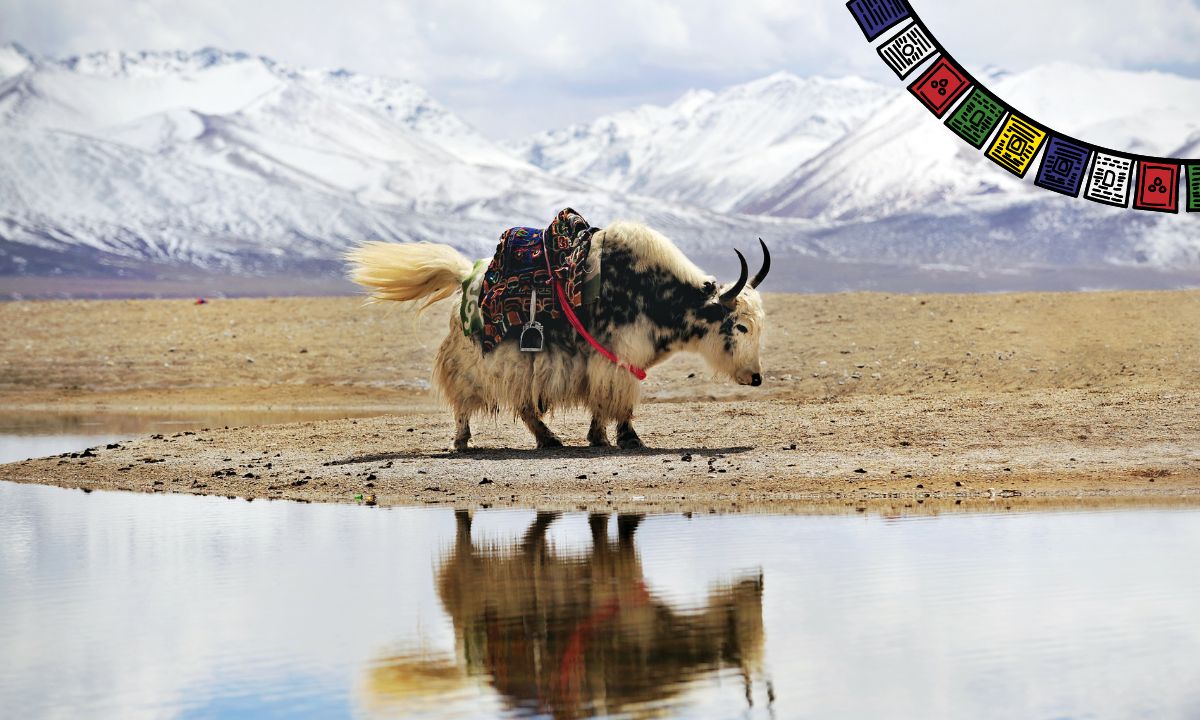Discovering the Secrets of Tibetan Butter Tea: In the vast expanse of the Tibetan plateau, where the air is thin and the winds harsh, a simple yet profound tradition has sustained the people for centuries: the ritual of drinking butter tea, or cha suyma. This ancient beverage, deeply rooted in Tibetan culture, offers not just warmth and energy but also a glimpse into the rich tapestry of Tibetan hospitality and spirituality. Let us delve into the heart of this tradition, uncovering the recipe and the cultural significance of Tibetan butter tea.
The Origins and Cultural Significance of Cha Suyma
Tibetans have relied on cha suyma for centuries, a tea recipe that includes just five simple ingredients yet can provide energy and warmth for a long time. This drink is called cha suyma and is an essential part of life for people living in the harsh Tibetan climate. No one knows exactly when Tibetans developed a taste for tea, but historians generally agree that it happened around the thirteenth century, when tea leaves were first brought to the mountainous region from neighboring China. Unlike the Chinese, however, the inhabitants of Tibet didn’t adopt tiny teapots and delicate cups for their tea ceremonies—they chose their path.
Of all the tea varieties, they selected only pressed pu-erh and created a fundamentally new recipe based on butter and milk. Making this Tibetan butter tea is quite a laborious and complex process, but life in Tibet is slow, and people there are used to taking their time with their rituals, dedicating as much time as needed. First, the “brick” tea is boiled until it acquires the desired flavor. Then, the leaves are removed, and the resulting brew is poured into a special wooden churn with yak butter.
The ingredients are whipped until homogeneous, poured into a teapot, reheated, and finally served. Often, butter tea is the base for a traditional Tibetan dish called tsampa, which is made from barley flour. If drunk in its “pure” form, it is always served hot, as cold cha suyma is unappealing in appearance and tastes like fatty cold soup.
Many Europeans compare the Tibetan ritual of preparing cha suyma to our more familiar tradition of drinking coffee: the residents of this mountainous region are also not ready to start their day without a cup of butter tea, which energizes and helps them wake up. Incidentally, the recipe for cha suyma inspired American Dave Asprey to create the famous “Bulletproof” coffee. Now, let’s explore how you can bring a bit of Tibet into your home by making cha suyma yourself.
 Making Tibetan Butter Tea at Home
Making Tibetan Butter Tea at Home
Creating this warming, energy-boosting drink at home is simpler than you might think. Here’s how you can make your cha suyma:
Ingredients:
You will need black tea (any variety you like), water, butter, milk, and salt.
Boiling the Water:
Start by pouring 4 cups of water into a pot and bringing it to a boil.
Brewing the Tea:
Without removing the pot from the heat, add the tea. Allow it to boil for as long as you prefer, with a minimum of 5 minutes to ensure the flavors develop fully.
Adding Milk and Salt:
Add salt to taste and 100 ml of milk to the tea. Stir the mixture and bring it back to a boil.
Straining the Tea:
Strain the brew to remove the tea leaves, and pour it into a suitable vessel for mixing.
Incorporating the Butter:
Add the butter and mix the resulting mixture with a mixer until smooth.
Remember, this tea should be consumed while it is still hot. Cold cha suyma can be unappealing in appearance and taste, resembling fatty cold soup.
The Ritual and Etiquette of Tibetan Butter Tea Drinking
If you can visit Tibet, experiencing cha suyma in its homeland is a cultural immersion. Here are a few key points about tea-drinking etiquette in Tibet.
Hospitality and Politeness: Cha suyma is more than just a beverage; it symbolizes hospitality and politeness. It is served everywhere guests are welcome, and it is refilled every time the guest takes a sip. To stop this endless tea ceremony, you must stop sipping, finish the conversation, and quickly leave after drinking the tea.
Respecting the Ritual: Tibetan butter tea is an important part of all rituals in this country, including religious ceremonies. Treat it with respect. The preparation and consumption of cha suyma are deeply ingrained in Tibetan life, and participating in this ritual is a way of showing appreciation for their culture.
Measuring Distances in Cups of Tibetan butter Tea: In Tibet, distances are sometimes measured in cups of cha suyma. The drink helps to overcome even the longest journeys, providing strength and energy since it is rich in nutrients, including beneficial fats necessary for the body to generate heat.
The Nutritional and Energetic Benefits
One of the reasons cha suyma has been a staple in Tibetan life for centuries is its nutritional and energetic benefits. The combination of black tea, milk, and butter creates a drink that is both nourishing and energizing. The beneficial fats from the yak butter provide long-lasting energy, essential for surviving the harsh Tibetan climate. The Tibetan butter tea offers antioxidants and other health benefits, making cha suyma a powerful tonic for both body and mind.
The richness of the butter and milk also helps to create a feeling of warmth and satiety, which is particularly important in the cold, high-altitude environment of Tibet. Drinking cha suyma can help to keep the body warm and energized throughout the day, making it an essential part of daily life.
Modern Adaptations and Inspirations
The influence of cha suyma extends beyond Tibet, inspiring modern adaptations like Bulletproof coffee. Created by American entrepreneur Dave Asprey, Bulletproof Coffee combines coffee with butter and MCT oil to create a similar energy-boosting drink. This modern twist on an ancient recipe has gained popularity worldwide, particularly among those looking for a sustained energy boost without the crash that often follows sugary or carb-heavy breakfasts.
The concept behind Bulletproof coffee and cha suyma is the same: to provide a steady source of energy and nutrition that can help sustain physical and mental performance throughout the day. Whether you prefer the traditional Tibetan recipe or its modern adaptation, the underlying principles remain the same, highlighting the timeless wisdom of these ancient practices.
Conclusion
In the end, the ritual of drinking Tibetan butter tea, or cha suyma, is more than just a means of nourishment—it reflects a culture that values hospitality, patience, and respect for tradition. As we embrace these principles in our own lives, we can find new ways to connect with the world around us and with the wisdom of those who came before us.
So, are you ready to try butter tea? If you are, or if you have already tried it, share your impressions in the comments. Whether you’re sipping cha summa in the comfort of your home or on a journey through the Tibetan mountains, let this ancient beverage warm your body and spirit, reminding you of the timeless connection we all share through the simple act of sharing a cup of tea.



 Making Tibetan Butter Tea at Home
Making Tibetan Butter Tea at Home